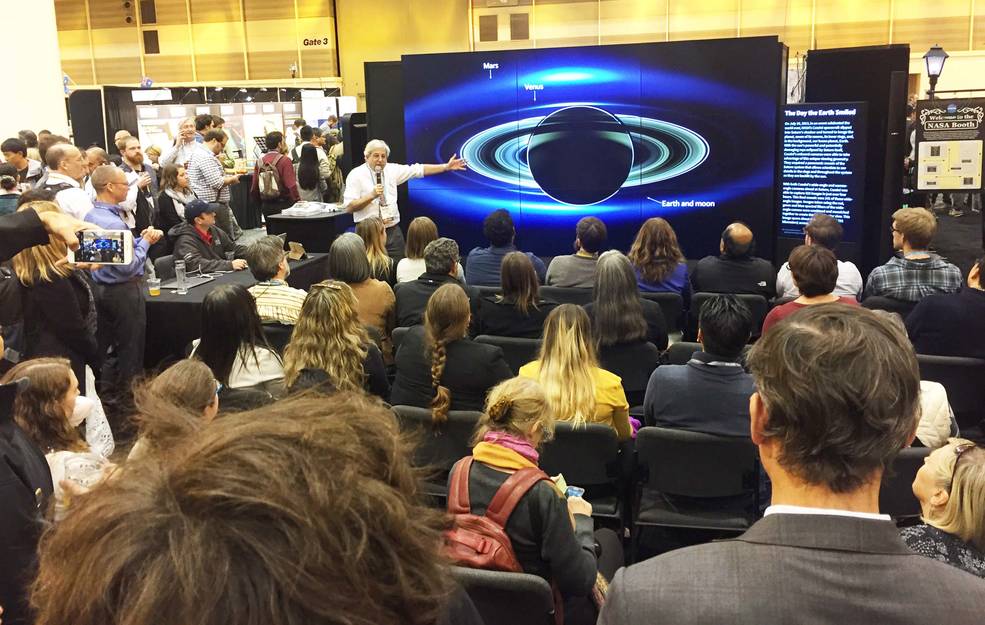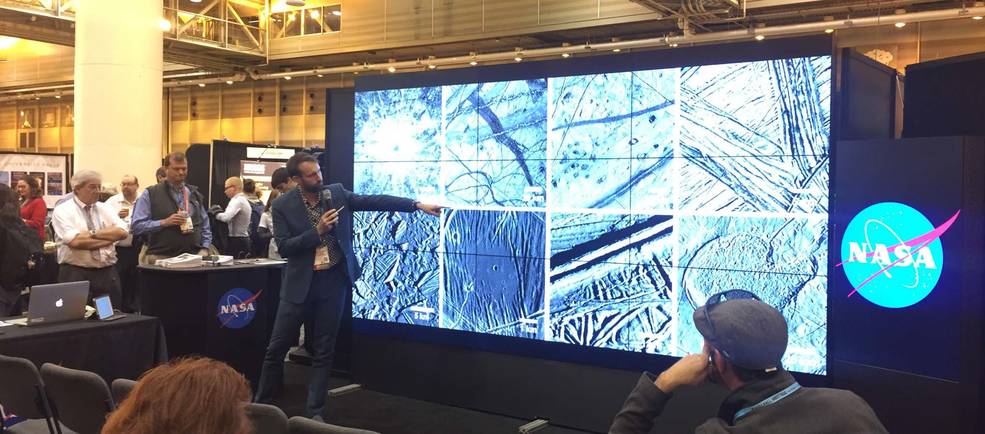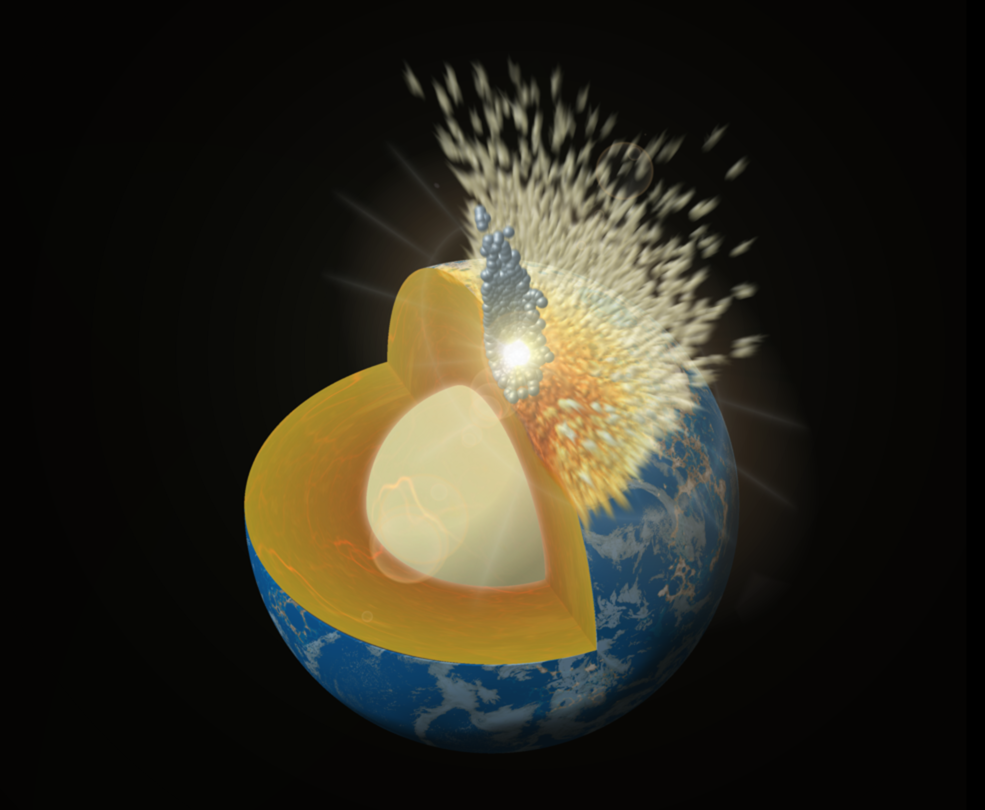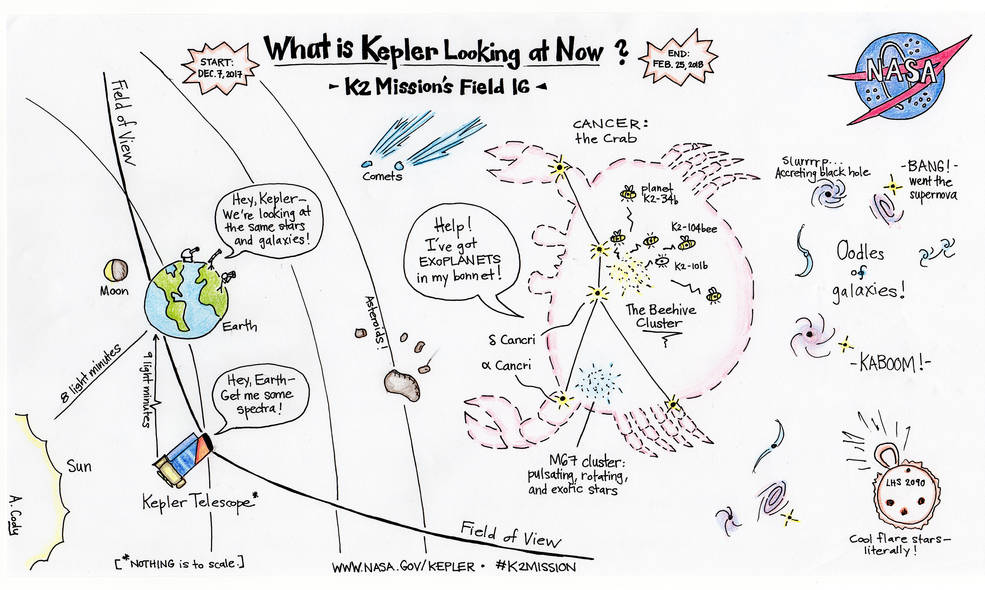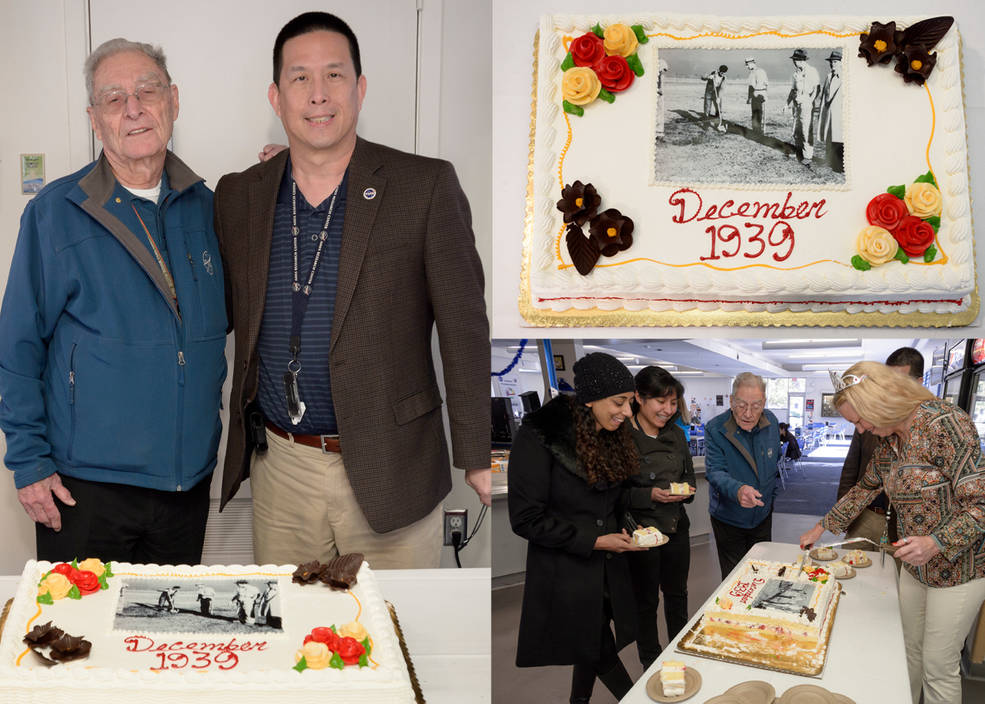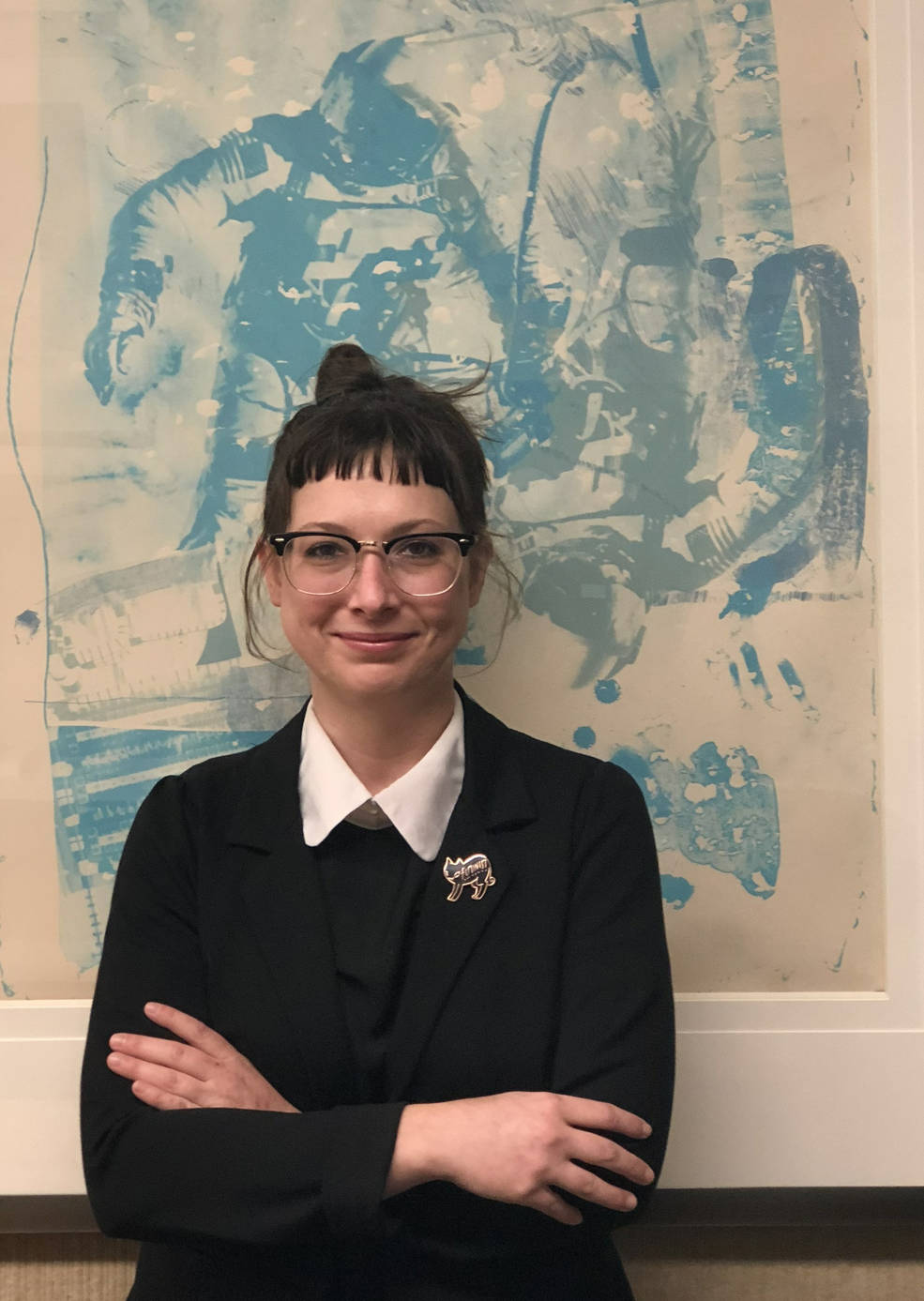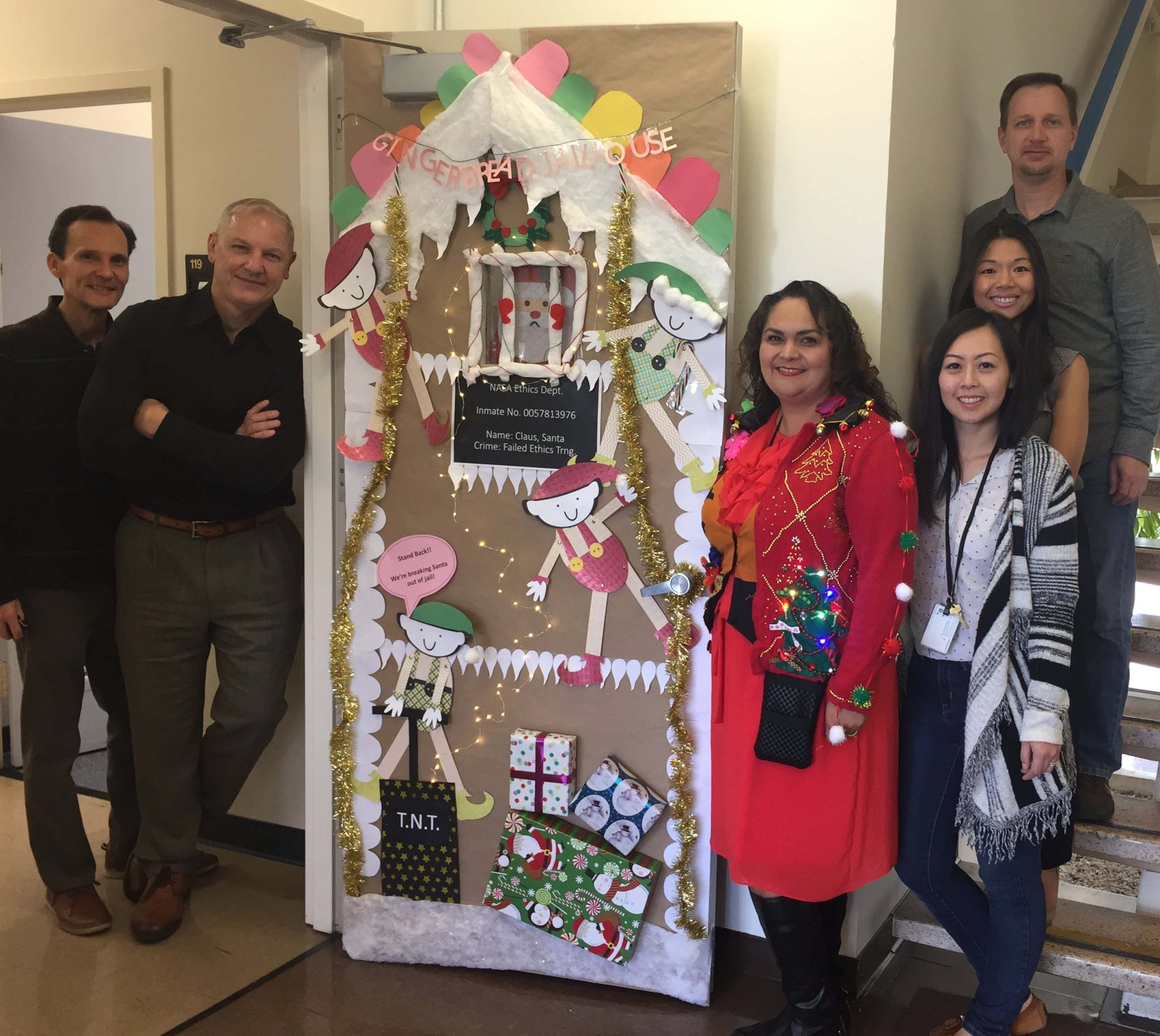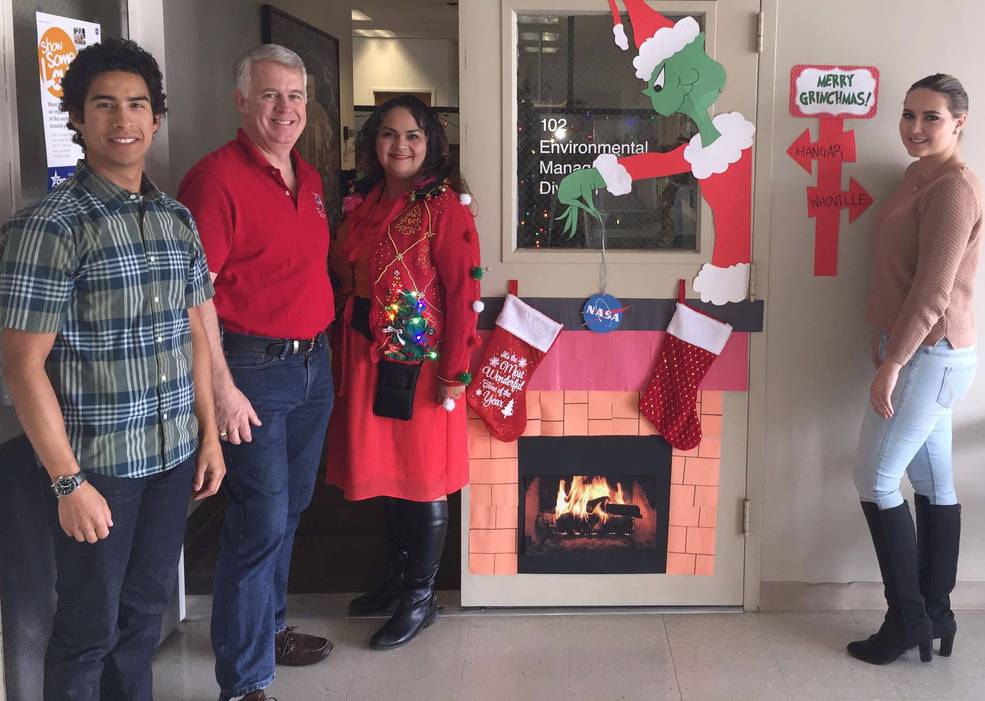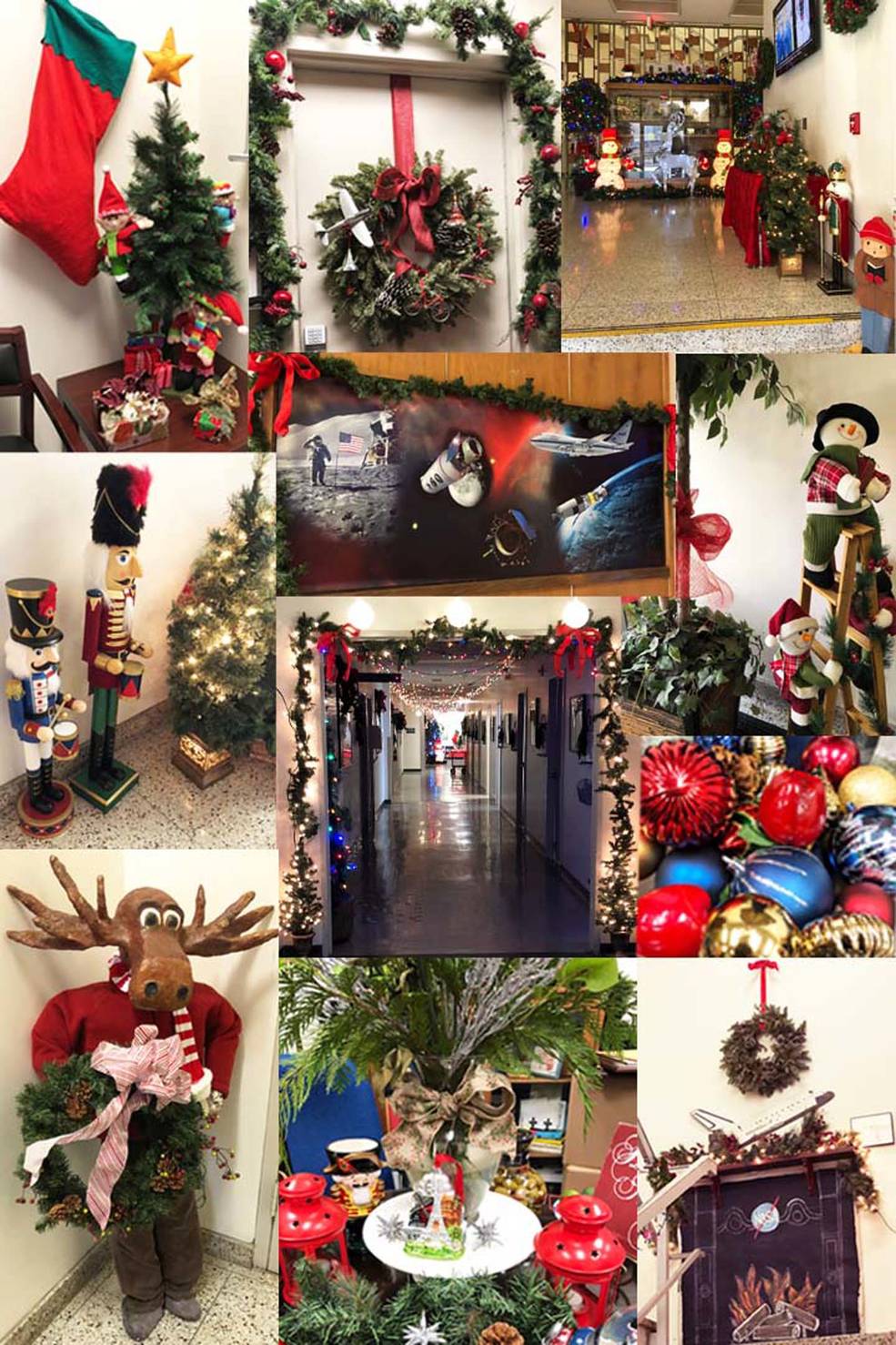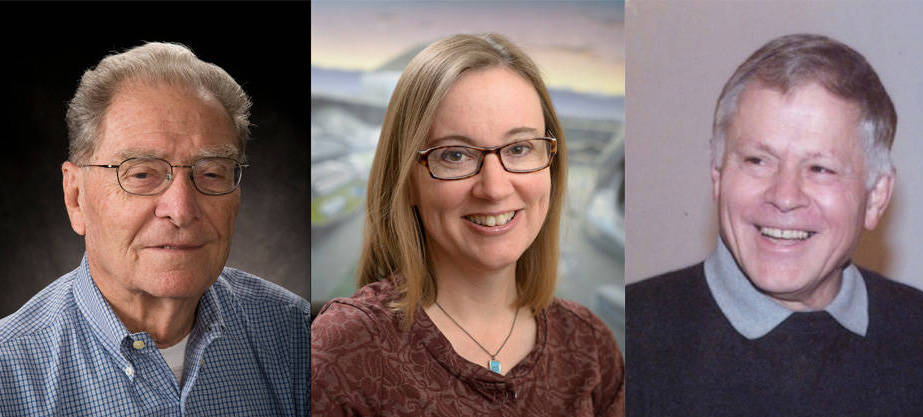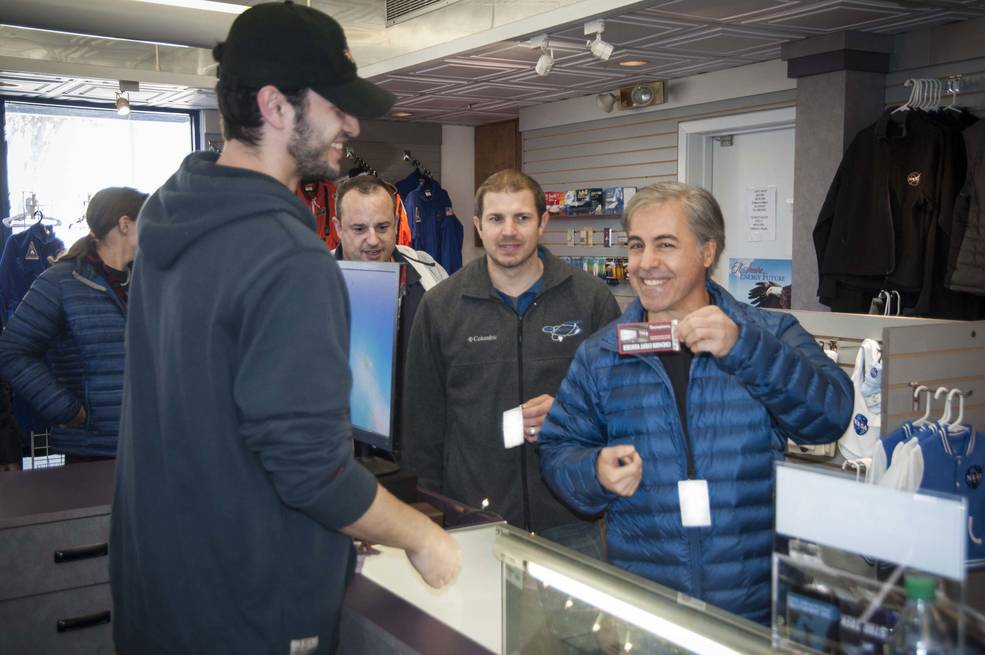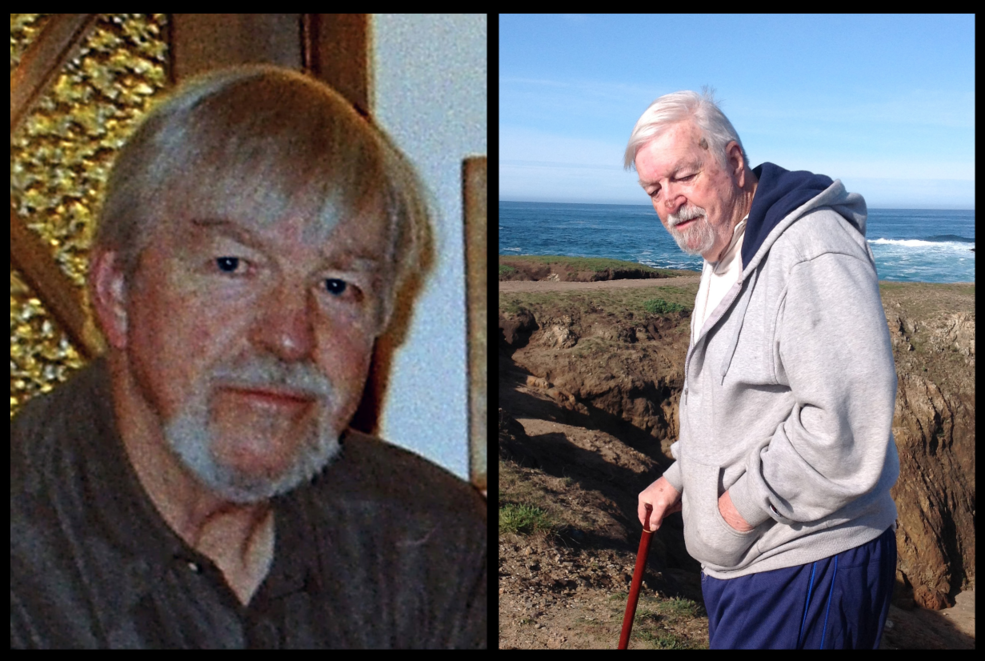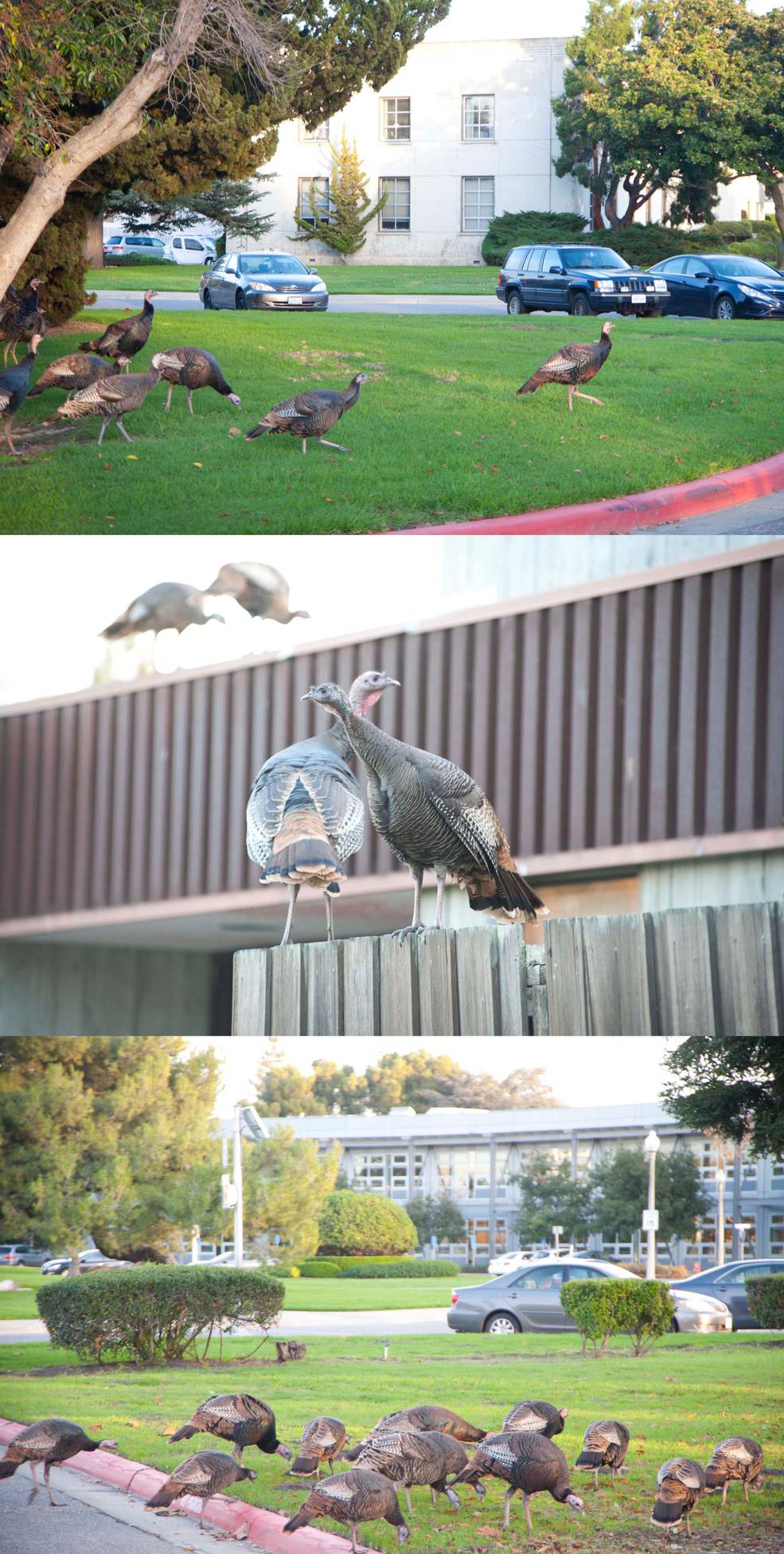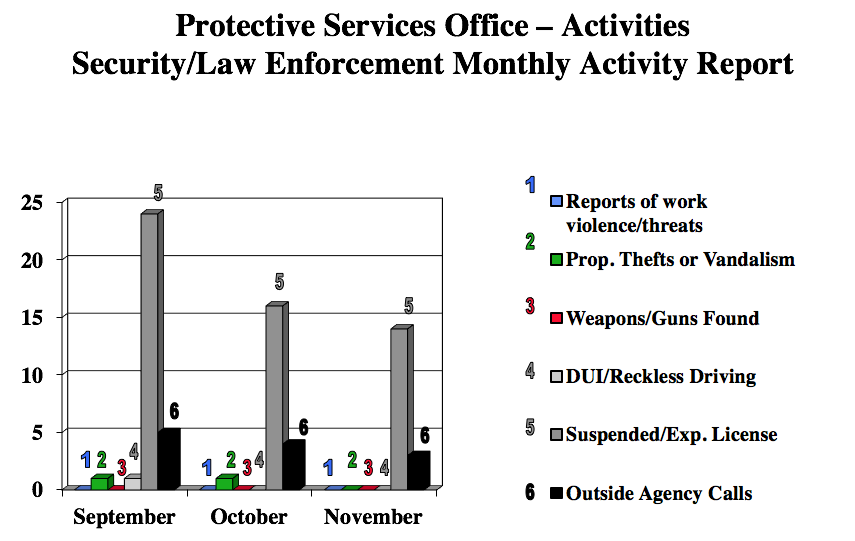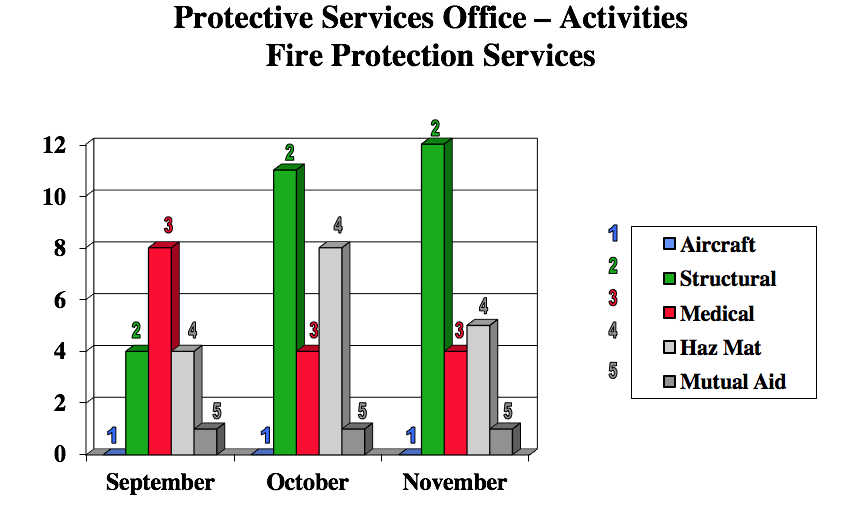Artificial Intelligence, NASA Data Discovers Eighth Planet Circling Distant Star
by Alison Hawkes
Our solar system now is tied for most number of planets around a single star, with the recent discovery of an eighth planet circling Kepler-90, a Sun-like star 2,545 light-years from Earth. The planet was discovered in data from NASA’s Kepler Space Telescope.
The newly-discovered Kepler-90i – a sizzling hot, rocky planet that orbits its star once every 14.4 days – was found using machine learning from Google. Machine learning is an approach to artificial intelligence in which computers “learn.” In this case, computers learned to identify planets by finding in Kepler data instances where the telescope recorded signals from planets beyond our solar system, known as exoplanets.
For full feature story, see: EighthPlanet
NASA Ames in Silicon Valley at the American Geophysical Union
by Danielle Carpenter
Scientists and researchers from NASA Ames in Silicon Valley were represented across the American Geophysical Union (AGU) fall meeting, tooks place at the New Orleans Ernest. N. Morial Convention Center in New Orleans, Louisiana, from Dec. 11 through 15, 2017.
For full schedule of events, see: AGUFallMeeting
Plants, Muscles, Microbes and Cells: NASA Biology Experiments Are Space Station-Bound
by Abby Tabor
Several bioscience experiments developed at NASA Ames are about to launch to the International Space Station on SpaceX’s 13th commercial resupply services mission for NASA.
This resupply mission, which is targeted to launch no earlier than Dec. 13, 2017, from Cape Canaveral Air Force Station in Florida, will carry experiments investigating muscle wasting, plant growth in low gravity, and the microorganisms inhabiting the space station. A new research facility that may help scientists better understand how key spaceflight factors, such as microgravity and space radiation, can affect human health during long exploration voyages, and reveal some of the fundamental workings of life here on Earth, is also packed in the Dragon capsule.
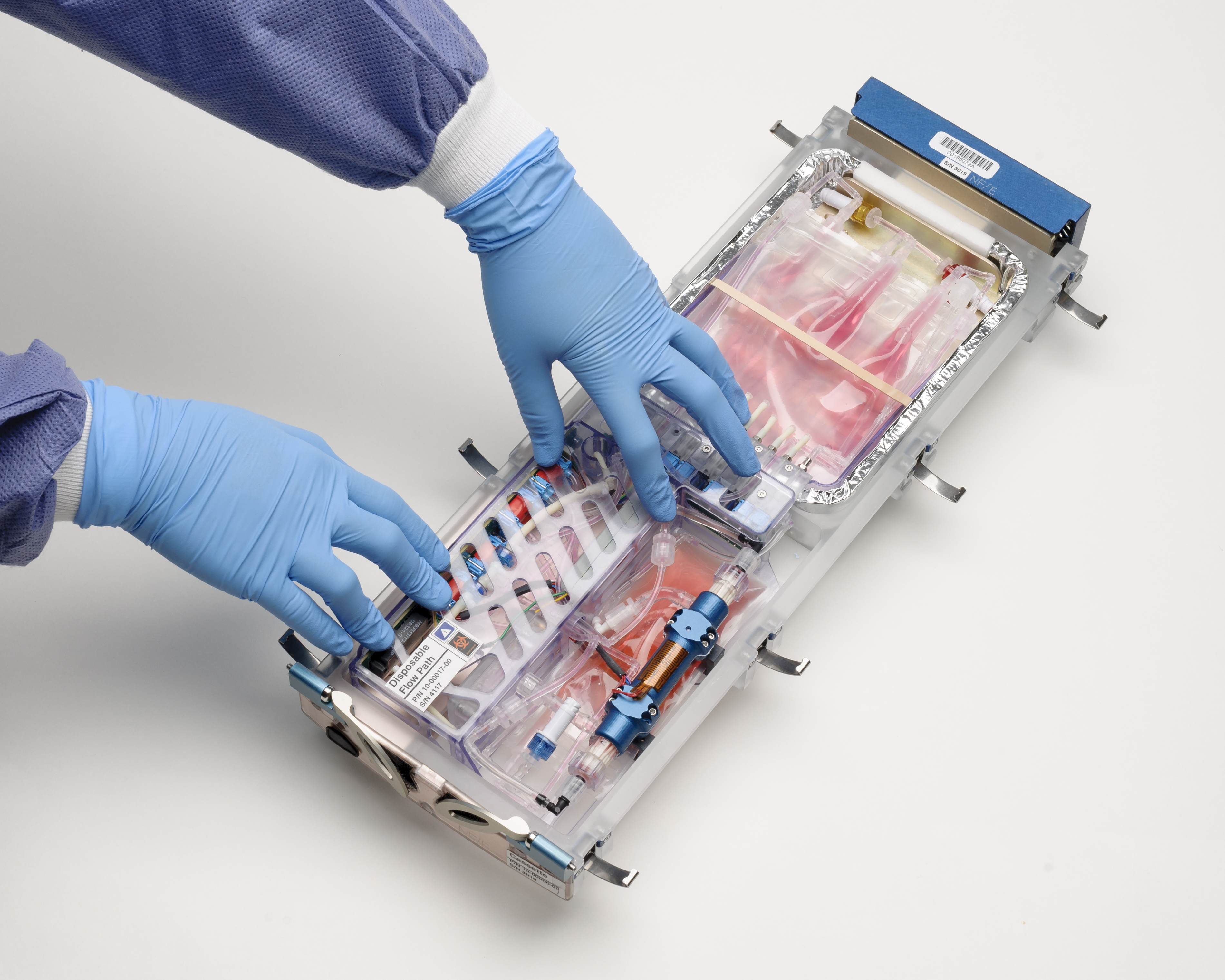
These are four seemingly distinct experiments, but all with the common goal of moving humans farther into the solar system than we’ve ever been before. Read on to learn what’s launching!
For full feature story, see: SpaceStationBound
NASA-funded Simulations Show How Massive Collisions Delivered Metal to Early Earth
by Kimberly Minafra
Planetary collisions are at the core of our solar system’s formation. Scientists have long believed that after the Moon’s formation, the early Earth experienced a long period of bombardment that diminished about 3.8 billion years ago.
During this period, called “late accretion,” collisions with moon-sized planetary bodies, known as planetesimals, embedded extensive amounts of metal and rock-forming minerals into the Earth’s mantle and crust. It is estimated that approximately 0.5 percent of Earth’s present mass was delivered during this stage of planetary evolution.
For full feature story, see: MassiveCollisions
Designing Future Human Space Exploration on Hawaii’s Lava Fields
by Abby Tabor
On the lava fields of Hawaii’s Kilauea volcano, a team of NASA researchers and partners have been busy doing science in a most unusual way. They were studying the biology and geology of this remarkable terrain while simulating a realistic mission to the surface of Mars. The conditions were so real that many of the expected challenges of otherworldly exploration were recreated, including a communications delay of several minutes, and limited bandwidth for transmitting data.
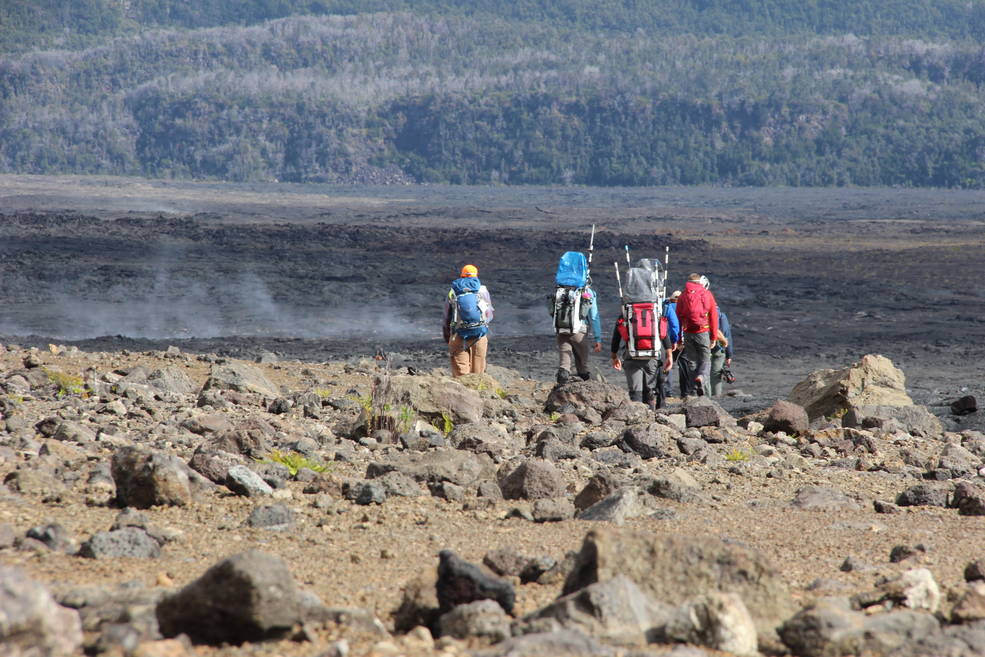
“Our project is a unique integration of science, operations and technology research in service of future human spaceflight,” said Darlene Lim, a scientist at NASA Ames and principal investigator of the Biologic Analog Science Associated with Lava Terrains project, called BASALT. “Our goal is to design the exploration of the future, and when you add science to the mix, that changes everything!”
For full feature story, see: HumanSpaceExploration
Kepler’s Gaze Shifts Toward New Targets – Supernova, ‘Beehive Cluster’ and Earth
by Alison Hawkes
The sixteenth observing campaign of the Kepler spacecraft’s K2 extended mission is now underway. The campaign has prospects for discoveries among 30,000 objects in the direction of the constellation Cancer. The cartoon illustrates some of the objects of interest that Kepler is observing for 80 days, from Dec. 7 to Feb. 25, 2018.
This time around NASA has positioned the spacecraft so that it’s facing in the direction of Earth, a vantage point that brings Kepler’s field of view in line with ground-based telescopes. It will be an opportunity to simultaneously observe celestial objects from the ground and space.
For full feature story, see: GazeShiftstoNewTargets
Cake Cutting Held for Ames’ 78th Anniversary
Introducing the New Center Historian
Dr. Layne Karafantis recently joined NASA Ames Research Center as its new historian. She comes to us after working at the Smithsonian National Air and Space Museum, where she served as the curator of the post-1945 military aircraft collection. Karafantis received her PhD in the history of science and technology from The Johns Hopkins University. Her thesis and forthcoming book describe the architecture and historical significance of Cold War command and control rooms. She looks forward to promoting distinctive past and contemporary Ames accomplishments.
Karafantis works in the Ames History Office as a KBR Wyle contractor under the Fully Integrated Lifecycle Mission Support Services contract. Headed by Jack Boyd and staffed with archivists April Gage and Danielle Lopez, the office’s mission is to explore ways to make the Center’s past relevant to its future.
Technical Accomplishments Featured at Student Fall Poster Session
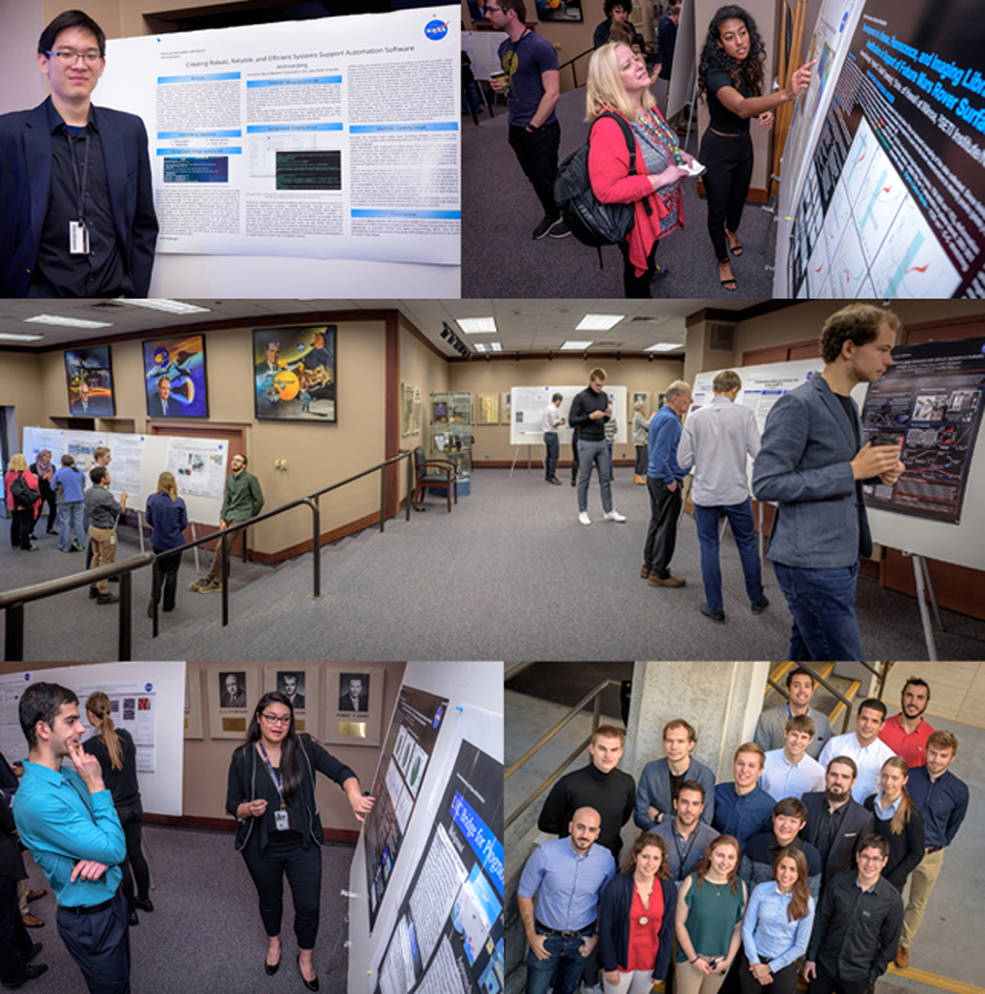
Employees Honored at Space Flight Awareness Ceremony
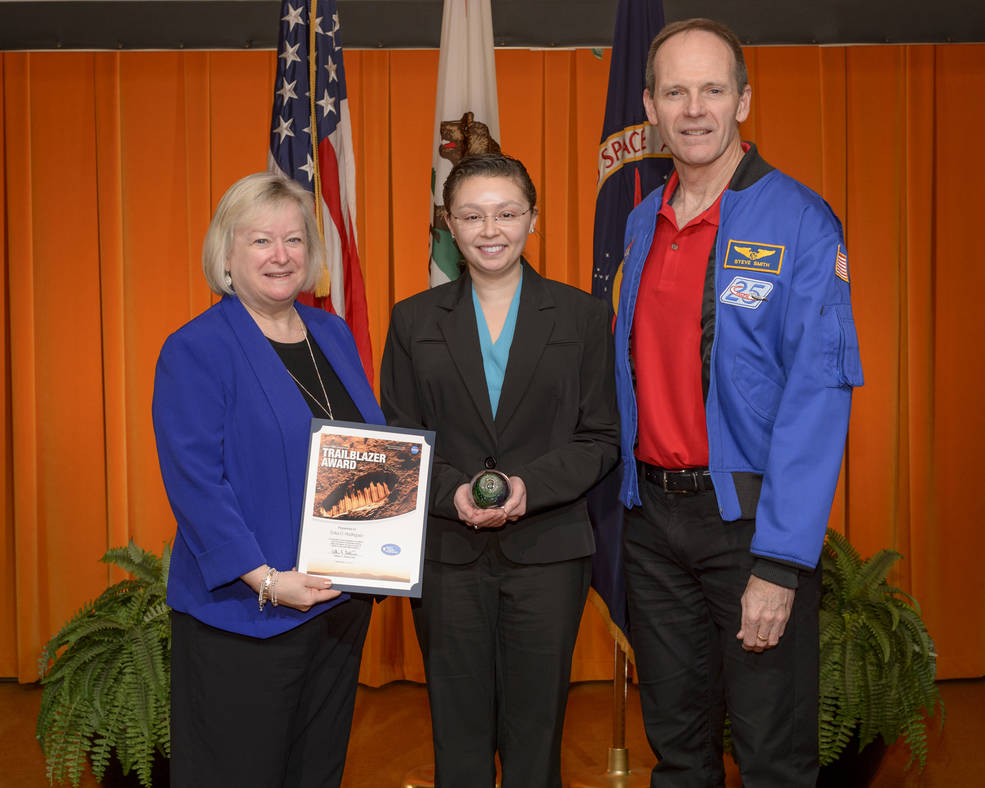
For additional awardee photographs, visit AmesImagingLibraryServices (accessible onsite at Ames only)
Employees Vote on Imaginative Holiday Sweaters and Decorated Doors
Winners of the Second Annual Ugly Holiday Sweater and Decorate Your Door Contests were: Carolina Rudisel, Voter’s Choice Award for Best Ugliest Holiday Sweater (below, both photos in red decorated holiday sweater); the Legal Team in N202A, Judge’s Choice for Best Decorated Holiday Door (top photo); and the Environmental Management Division team in N204 Voter’s Choice for Best Decorated Holiday Door (bottom photo). Congratulations to the winners of this year’s contests! Each have won an Ames Exchange Gift Certificate.
Engineering Systems Division's Building is Definitely Decked out for the Holidays!
Ombuds Offices Services Available to Ames Employees
The Ames Ombuds Office provides all civil servants, contractors and students at the center with a supplemental, confidential and informal channel of communication to raise significant issues and concerns that they perceive could impact safety, organizational performance or mission success.
The Ombuds is accountable for conducting informal inquiries, raising issues of concern to appropriate officials and can redirect matters not under the Ombuds’ realm to the appropriate office or organization with an existing administrative system should an individual so desire; for example, the Inspector General, the Office of Equal Opportunity and Diversity, Ames Federal Employees Union, Procurement Ombuds, Chief Counsel and Human Resources.
The Ombuds’ power rests on their reputation for confidentiality, fairness, objectivity, tact and respectful concern for the welfare of all individuals of the NASA community and for the well-being of the agency.
John (Jack) Boyd, Lisa Lockyer and Jim Arnold all serve as Ames’ Ombuds. They can meet you at a location of your choice. You also can work with an Ombuds at another center.
The Ombuds office is located in Building 200, room 205, Mail Stop 200-1A. Boyd can be reached at ext. 4-5222 or at email: john.w.boyd@nasa.gov, and Lockyer can be reached at ext. 4-3009 or at email: lisa.l.lockyer@nasa.gov. Arnold can be reached at ext. 4-5265 or at email: james.o.arnold@nasa.gov The Ombuds website is: http://insideames.arc.nasa.gov/life-ombudsoffice.php
The Force be With Us … Ames Exchange Treats Employees to "Star Wars: The Last Jedi" Tickets
In Memoriam …
Former NASA Ames Engineer, Will Vallotton, Passes Away
Wilbur (Will) Carter Vallotton passed away peacefully on July 9, 2017, at the age of 83 years, at his home in Arnold, California. Born in Modesto, California, on Feb. 27, 1934, Will grew up in Sunnyvale and attended Fremont High School. After studying mechanical engineering at San Jose State College, Will was hired by the NACA (later NASA) where he worked as a mechanical design engineer for more than 41 years at Ames Research Center.
Will was continually called upon to solve some of the most challenging problems confronted by NASA projects and programs. Combining his mastery of engineering with his extraordinary artistic talents, creativity and innovativeness, Will could be counted on to offer the most elegant and effective of conceptual and detailed design solutions.
Will’s ingenuity has found a permanent place in numerous NASA research facilities, flight and environmental simulators, experimental payloads and aerospace systems. Some of the major systems of which Will offered significant design contributions include the 300-g and 52-foot centrifuges, the National Full-Scale Aerodynamics Complex (NFAC) 80-foot-by-120-foot inlet, the Stratospheric Observatory for Infrared Astronomy (SOFIA) Telescope and Cavity Door, the Unitary 11-foot Wind Tunnel, the 12-foot Wind Tunnel, the Vertical Motion Simulator and the AX-Series Spacesuits. Will holds three NASA patents as primary inventor and published numerous technical articles that were included in the NASA Tech Briefs Magazine and the Aerospace Mechanisms Symposium proceedings.
Will retired from NASA in 1999 and relocated to the mountains of Calaveras County, where he focused on his interests of woodworking, art, fishing, spending time in nature, traveling and spending time with family. Will is survived by his wife of 49 years, Shirley, three children, three step children, six grandchildren and six great grandchildren.






























